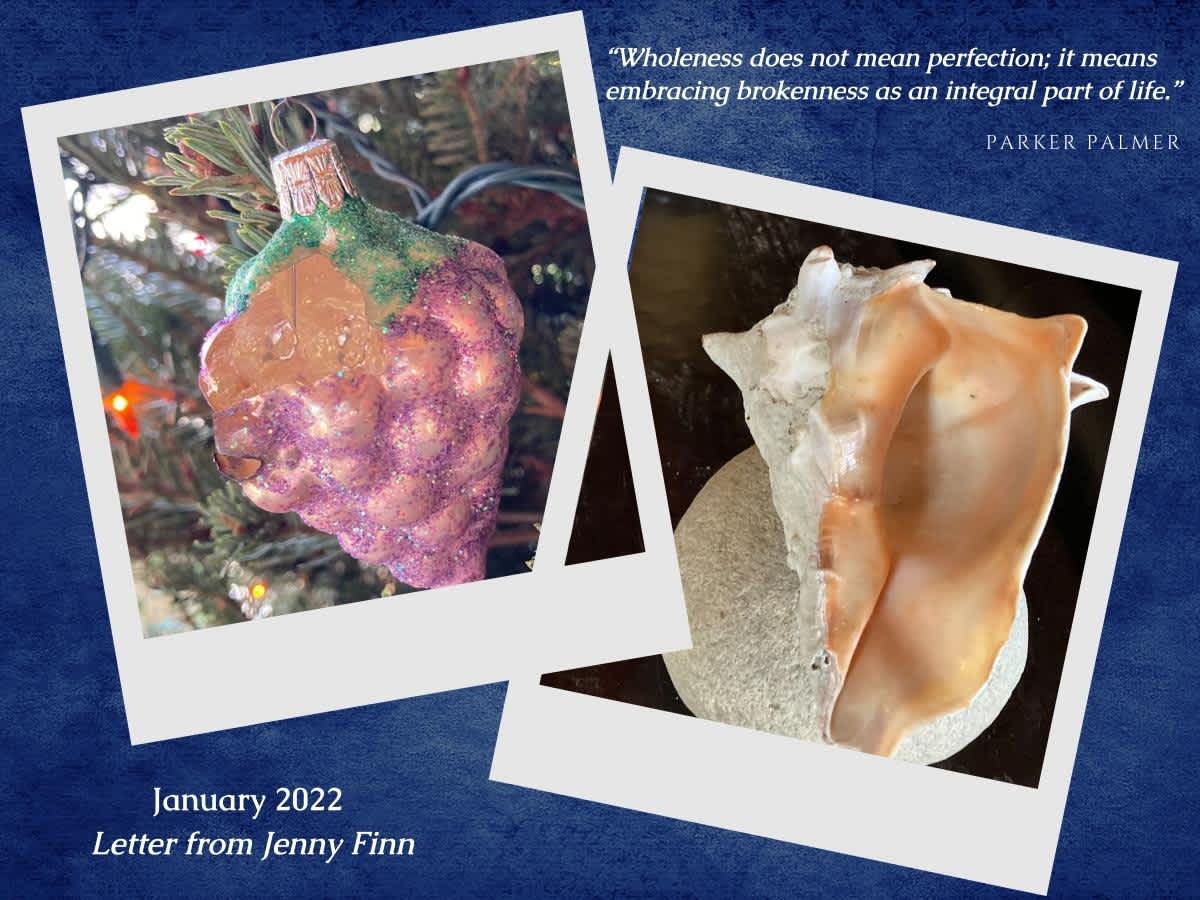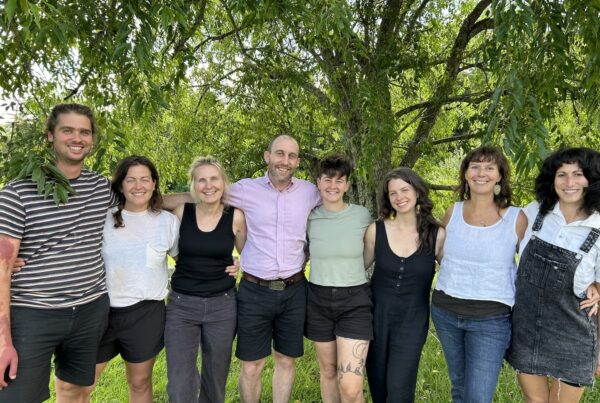Wholeness does not mean perfection; it means embracing brokenness as an integral part of life.
Parker Palmer
Dear Springhouse community,
These words from Parker Palmer have been a favorite of mine for a long time. With each day that passes, I continue to learn much about the relationship between brokenness and wholeness. The relationship between the two is important, and often neglected, when we consider the lives and cultural designs we create.
Many Christmases ago, Andy and I received a whole box of beautiful ornaments as a wedding gift from my sister-in-law. This Christmas, I broke one of my favorites – an aluminum ornament that looks like a sparkly bunch of grapes. My hip brushed a branch on our tree and down it went. When I heard the crack as it hit the floor, my heart sank a little.
Several years ago on a Springhouse Experience Week trip to North Carolina, one of our teen learners got into the freezing cold ocean and came out with a conch shell. It was absolutely stunning, and he gave it to me. I have cherished it ever since, and just today, when I was cleaning the house, I bumped a table, and it fell on the floor. I literally cried out so loudly my son came out to make sure I was okay. Brokenness, of even the smallest sort, can hurt a little, especially when it feels like something perfect has been broken.
Much of my life has been devoted to designing culture in ways that take care of and foster life – whether that is the design of an individual life, a community, or an organization. When we design our lives and systems without considering the whole, we limit what is possible. The design is too small. Equally as important, when we design in ways that don’t consider the individual parts of a whole, we lose the uniqueness or remarkability of a thing. The conventional educational system is only one example of where cultural design has forgotten the whole. In that system, we do not take care of the whole person; we neglect how the educational system meets the whole of the community that it is nested in; and, tragically, our perspective is limited and curriculum and cultural ways suffers because they do not include the whole of our history, nor do they honor the relationship between humans and the planet we belong to.
This trimester, I am facilitating a course at Springhouse exploring algebra. At its origin, algebra means “the reunion of broken parts.” How many of us learned that in math class? Along with learning the mathematics of algebra, we are exploring wholeness through creative expression and through a deeper understanding of our very lives. Right before the winter break, we went outside and broke perfectly whole plates. Both glee and caution were present in all of us as the plates cracked. We plan to make a mosaic with the pieces. In addition to art, we can solve for the unknown in our own lives, as one of the teens has taught me. She has significantly more mathematical experience than the other learners, and when I asked her whether she wanted a more individualized mathematical challenge or to support the other learners as they find their way, she chose the latter. This learner is solving for a different kind of unknown – one that involves strengthening her leadership skills, something she didn’t even know she had.
At Springhouse, we don’t strive for perfection. We seek to welcome and embrace wholeness. Wholeness is different from perfection. Something can be broken, and it still can be whole. When we forget wholeness, we orient around brokenness and separation. Our perspective shrinks, and we forget that we belong to each other and this Earth. Education can be a pathway to wholeness by deeply honoring the uniqueness and challenges of each person and place, while at the same time practicing our collective connection. We at Springhouse know this to be true because we practice this every day.
There is no greater purpose for education to serve than to remind us that we are whole. The brokenness is much less scary when we remember that. When it comes to my sparkly ornament, I hung it on the tree anyway. I even wrapped it in bubble wrap to put away for next year’s tree. The conch shell? I swept up the broken parts and put it back on my table. I think I appreciate both of them more now.
Let us remember we are whole, and let that motivate us to move toward the unknowns within ourselves and in our culture in service to a more loving and life-giving culture.
Gratefully and with love,
Jenny




So beautiful.
I receive so many newsletters in my inbox that I feel overwhelm at the sight of them and rarely take time to read more than the first few lines. “From the Edge” is an exception. I am pulled from the first line to the last and fed along the way. The whole Springhouse project gives me hope that there is another way to go about sharing the Earth, a way that makes sense and is loving to all forms of life.